Showing Spotlights 673 - 680 of 2879 in category All (newest first):
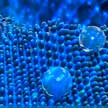 To perform a risk assessment of nanomaterials in the environment, information on the exposure, i.e. the amounts that are present in the environment, is essential. In contrast to many other known pollutants, the concentrations of nanomaterials in environmental systems cannot be measured directly. In this situation, exposure modelling is a solution to estimate the environmental exposure with synthetic nanomaterials. In order to predict the amount of a nanomaterial in a certain environmental compartment (environmental exposure) present in a certain area, two basic types of models are required - material flow analysis and environmental behaviour modelling.
To perform a risk assessment of nanomaterials in the environment, information on the exposure, i.e. the amounts that are present in the environment, is essential. In contrast to many other known pollutants, the concentrations of nanomaterials in environmental systems cannot be measured directly. In this situation, exposure modelling is a solution to estimate the environmental exposure with synthetic nanomaterials. In order to predict the amount of a nanomaterial in a certain environmental compartment (environmental exposure) present in a certain area, two basic types of models are required - material flow analysis and environmental behaviour modelling.
Apr 23rd, 2019
 Proton radiation damage is an important failure mechanism for electronic devices in near-Earth orbits and deep space. The future of space exploration depends crucially on the development of new electronic technologies that are immune to space radiation, which consists primarily of protons, electrons, and cosmic rays. The penetrating energetic radiation of deep space produces negative impacts on not only biological entities but also the electronic systems of space vehicles. Researchers have now demonstrated two-dimensional charge-density-wave devices with a remarkable immunity to bombardment with protons.
Proton radiation damage is an important failure mechanism for electronic devices in near-Earth orbits and deep space. The future of space exploration depends crucially on the development of new electronic technologies that are immune to space radiation, which consists primarily of protons, electrons, and cosmic rays. The penetrating energetic radiation of deep space produces negative impacts on not only biological entities but also the electronic systems of space vehicles. Researchers have now demonstrated two-dimensional charge-density-wave devices with a remarkable immunity to bombardment with protons.
Apr 22nd, 2019
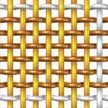 Dozens of nanotechnology research groups worldwide are working on the development of triboelectric nanogenerators (TENGs) for harvesting energy from mechanical vibrations. The huge interest in TENGs stems from their ability to convert ambient mechanical energy into electricity for powering wearable electronics, energy generation using sound, sensor networks, removing air pollution with nanogenerator-enhanced air filters, implantable medical devices, and other small systems. A recent article comprehensively reviews the recent advances in TENG-based health monitoring.
Dozens of nanotechnology research groups worldwide are working on the development of triboelectric nanogenerators (TENGs) for harvesting energy from mechanical vibrations. The huge interest in TENGs stems from their ability to convert ambient mechanical energy into electricity for powering wearable electronics, energy generation using sound, sensor networks, removing air pollution with nanogenerator-enhanced air filters, implantable medical devices, and other small systems. A recent article comprehensively reviews the recent advances in TENG-based health monitoring.
Apr 12th, 2019
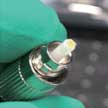 Polymer composite films, particularly those based on polymers and layered nanomaterials, are attractive materials for exploiting the properties of multiple materials for applications in electronics and photonics. Recently, scientists have found that beta-lead oxide quantum dot /polystyrene composite films exhibit excellent stability in high humidity and strong saturable absorption response from visible to the near-infrared region. This makes them an attractive material for practical applications in optoelectronic devices in marine environments and other harsh condition, such as humid weather.
Polymer composite films, particularly those based on polymers and layered nanomaterials, are attractive materials for exploiting the properties of multiple materials for applications in electronics and photonics. Recently, scientists have found that beta-lead oxide quantum dot /polystyrene composite films exhibit excellent stability in high humidity and strong saturable absorption response from visible to the near-infrared region. This makes them an attractive material for practical applications in optoelectronic devices in marine environments and other harsh condition, such as humid weather.
Apr 8th, 2019
 Researchers propose a highly integrated system of an 'air charging' zinc-ion capacitor/battery. By scavenging energy from pervasive air, a zinc-ion capacitor/battery can be conveniently and easily charged without applying an additional power source. The system possesses a simply structure that consists of a flexible bifunctional U-shaped electrode (with the dual function of energy harvesting and storage), a zinc-metal electrode in middle, and two different polyelectrolytes (PAM and PANa) sandwiched between the metal zinc and the electrode.
Researchers propose a highly integrated system of an 'air charging' zinc-ion capacitor/battery. By scavenging energy from pervasive air, a zinc-ion capacitor/battery can be conveniently and easily charged without applying an additional power source. The system possesses a simply structure that consists of a flexible bifunctional U-shaped electrode (with the dual function of energy harvesting and storage), a zinc-metal electrode in middle, and two different polyelectrolytes (PAM and PANa) sandwiched between the metal zinc and the electrode.
Apr 5th, 2019
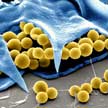 New work on self-propelled biohybrid microrobots has been inspired by recent developments of biohybrid cyborgs that integrate self-propelling bacteria with functionalized synthetic nanostructures to transport materials. Taking inspiration from the science fiction concept of a cybernetic organism, or cyborg, researchers developed a self-propelled biohybrid microrobot, named rotibot, employing the marine microorganism rotifer as their engine.
New work on self-propelled biohybrid microrobots has been inspired by recent developments of biohybrid cyborgs that integrate self-propelling bacteria with functionalized synthetic nanostructures to transport materials. Taking inspiration from the science fiction concept of a cybernetic organism, or cyborg, researchers developed a self-propelled biohybrid microrobot, named rotibot, employing the marine microorganism rotifer as their engine.
Apr 3rd, 2019
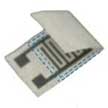 Recently, a brand-new mechanism of pressure sensing, known as flexible iontronic sensing (FITS), has been introduced, which utilizes pressure-induced capacitive changes between electrodes and ionic surfaces. Researchers have used FITS to develop a single-sheet iontronic paper substrate with both ionic and conductive patterns as an all-in-one flexible sensing platform. This novel paper sensor extends the iontronic sensing principle to a more adaptive material system, with direct printability, custom cuttability, and 3D foldability at a low cost - just as regular paper.
Recently, a brand-new mechanism of pressure sensing, known as flexible iontronic sensing (FITS), has been introduced, which utilizes pressure-induced capacitive changes between electrodes and ionic surfaces. Researchers have used FITS to develop a single-sheet iontronic paper substrate with both ionic and conductive patterns as an all-in-one flexible sensing platform. This novel paper sensor extends the iontronic sensing principle to a more adaptive material system, with direct printability, custom cuttability, and 3D foldability at a low cost - just as regular paper.
Mar 27th, 2019
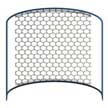 An international team of researchers has demonstrated a simple method for transferring A4-size sheets of CVD graphene from copper foils onto a target substrate using a commercially available polyvinyl alcohol (PVA) polymer foil as a carrier substrate and an off-the-shelf office laminator. This do-it-yourself approach requires few tools and low cost materials - it is safe and easy enough to be carried out in school physics classes. There are no chemicals involved besides water; no spinner; no dangerous etchants.
An international team of researchers has demonstrated a simple method for transferring A4-size sheets of CVD graphene from copper foils onto a target substrate using a commercially available polyvinyl alcohol (PVA) polymer foil as a carrier substrate and an off-the-shelf office laminator. This do-it-yourself approach requires few tools and low cost materials - it is safe and easy enough to be carried out in school physics classes. There are no chemicals involved besides water; no spinner; no dangerous etchants.
Mar 25th, 2019
 To perform a risk assessment of nanomaterials in the environment, information on the exposure, i.e. the amounts that are present in the environment, is essential. In contrast to many other known pollutants, the concentrations of nanomaterials in environmental systems cannot be measured directly. In this situation, exposure modelling is a solution to estimate the environmental exposure with synthetic nanomaterials. In order to predict the amount of a nanomaterial in a certain environmental compartment (environmental exposure) present in a certain area, two basic types of models are required - material flow analysis and environmental behaviour modelling.
To perform a risk assessment of nanomaterials in the environment, information on the exposure, i.e. the amounts that are present in the environment, is essential. In contrast to many other known pollutants, the concentrations of nanomaterials in environmental systems cannot be measured directly. In this situation, exposure modelling is a solution to estimate the environmental exposure with synthetic nanomaterials. In order to predict the amount of a nanomaterial in a certain environmental compartment (environmental exposure) present in a certain area, two basic types of models are required - material flow analysis and environmental behaviour modelling.
 Subscribe to our Nanotechnology Spotlight feed
Subscribe to our Nanotechnology Spotlight feed





